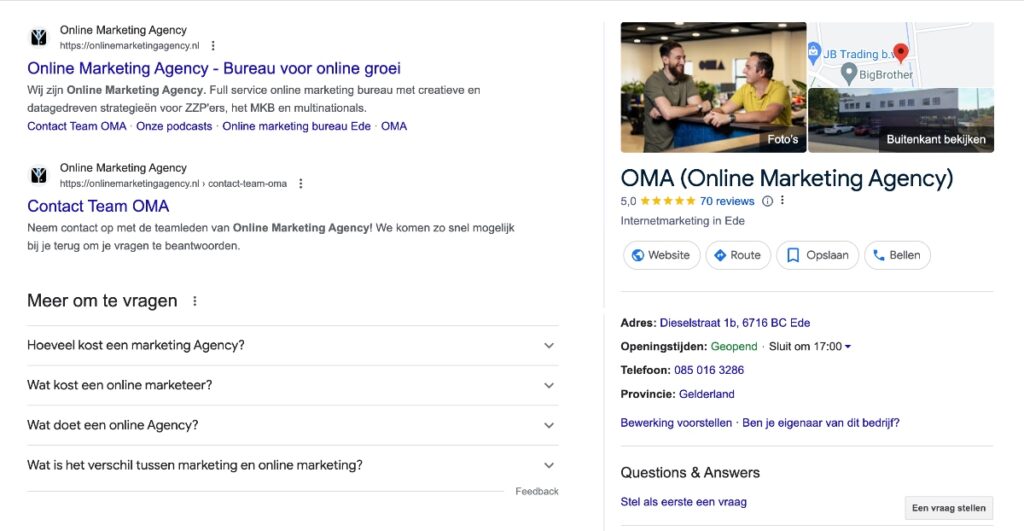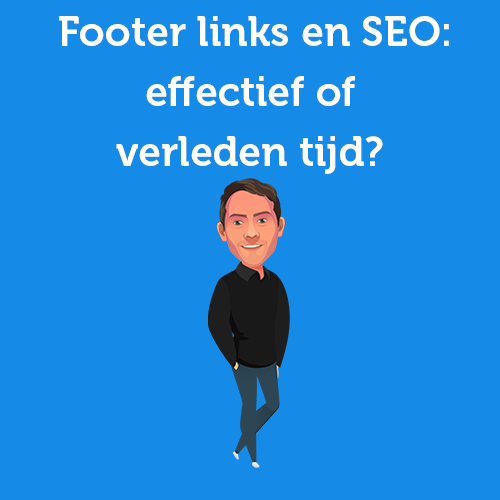Menu
Table of contents
But painters and plumbers also have a certain working area. Therefore, it is mostly ZZP'ers and SMEs that focus on a target group from the same area where the company is located.
Logically, then, you also want to be found online by people from that region.
And that's exactly what you can achieve with local SEO.
Ps. I also recorded a podcast on this topic. You can find that on Spotify, as well as on YouTube:
What exactly is local SEO?
Local SEO is basically nothing more than your regular search engine optimization ... but focused on optimizing your online presence for searches from a particular region.
And why is that important? Because Google is not stupid.
She also knows that when someone from Arnhem searches for a plumber, they don't need to show results from Amsterdam plumbers.
And so search results are shown primarily from Arnhem, or at least Gelderland, plumbers.

The same goes for stores, restaurants and you name it. Try it.
About half of all searches have such local intent(source) and, according to Google itself, those searches lead to an actual visit to a store in 50% of cases and to a purchase in 28% of cases(source).
Huge marks.
All the more important, then, that your local SEO is in order. And you can do that with the following, easily applicable tips:
1. Provide a good foundation
Local SEO is also just search engine optimization and so it also benefits from a good foundation.
That means that your website must be in order and that you must have optimized all On-page SEO elements. A fast load time, with a mobile-friendly version and filled with unique meta titles -descriptions that of course you just subtly incorporate the place or region you want to be found in.
The basics, folks. Get them right.
2. Create and optimize your Google My Company
The Google My Business page is super important for local SEO. It's free and can do wonders for your online visibility.
In fact, it gets you into Google Maps, and that map is displayed again in local search results.
That's why in a previous blog I told you how to apply for and verify a Google My Company in a few steps. So implement those steps.
Once you've managed all that (or you've created one as a Google My Company at some point), you still need to optimize it.
Not difficult, but important. Choose the most relevant category.
The more relevant, the better.
Create a full description of your business, upload your company's logo or a picture of your premises so people can recognize it, update your business hours and add pictures of your services or products.
Complete your page and make sure your contact information is correct. Otherwise, everything will be for nothing.

3. Create local content
Back to your website. That's where you need to create local content.
By this I don't mean that you should start writing your texts in dialect, but that you should include your area of operation or the location of your physical locations in the content on your website.
For example, on your services page, tell where you do your work or in the "about us" page where your store, office or restaurant is located.
And while you're at it, try to win people over right away with some benefits of your location (easy access, free parking and you name it).
A common tactic is to create local landing pages. Special pages focused on the search term of your service or product in conjunction with a place in your area of operation or region, even though you may not be located there.
And yes, that works (still) ... but often only when competition in that area is low.
So could definitely be an option.
Pro tip: for less than €26 per month you can find out the very best keywords with KWFinder. In my experience, you'll have this out of your pocket in 1 week. KWFinder saves you time and provides you with better content.
4. Gather local links
Actively seek links from local websites and directories (read: online business directories). Are you affiliated with a local business association?
Do you sponsor the soccer club or another event?
Then see if there are opportunities for a link from their website to yours. This will show Google that you are also locally relevant.
Also register your business with (relevant) business directories, such as Eet.nu, Tripadvisor and Yelp for restaurants. When doing so, make sure your contact information is up-to-date and the same everywhere.
Otherwise, Google gets confused - and you don't want that.
5. Use structured data
You can use structured data to indicate to Google exactly what your contact information is. So do that, because by doing so, you make things a lot easier for the search engine.
What exactly structured data is and how to use it optimally for local SEO, among other things, can be read here.
You'll also learn right away how to make the most of your reviews to stand out more in search results. Pretty handy, too, right?

Are you done with local SEO then?
The above tips should get you a long way. But you're still not done then.
Indeed, you never are.
For perhaps most importantly, keep up with your local SEO. Update your data as needed and add new content or other news regularly.
Show that you are active and give both Google and visitors confidence that your data is correct. Then all will be well.
But in addition to updating, I want to touch on your overall SEO. SEO is more than just a few simple tricks. So a few minor tweaks won't get you there.
This article was written on May 21, 2019 and updated on January 22, 2024.











Written by: Daniel Kuipers
Daniel is the founder of Online Marketing Agency. He constantly scours the Internet for the latest gadgets and tactics and blogs about them in understandable language. Well, sometimes.